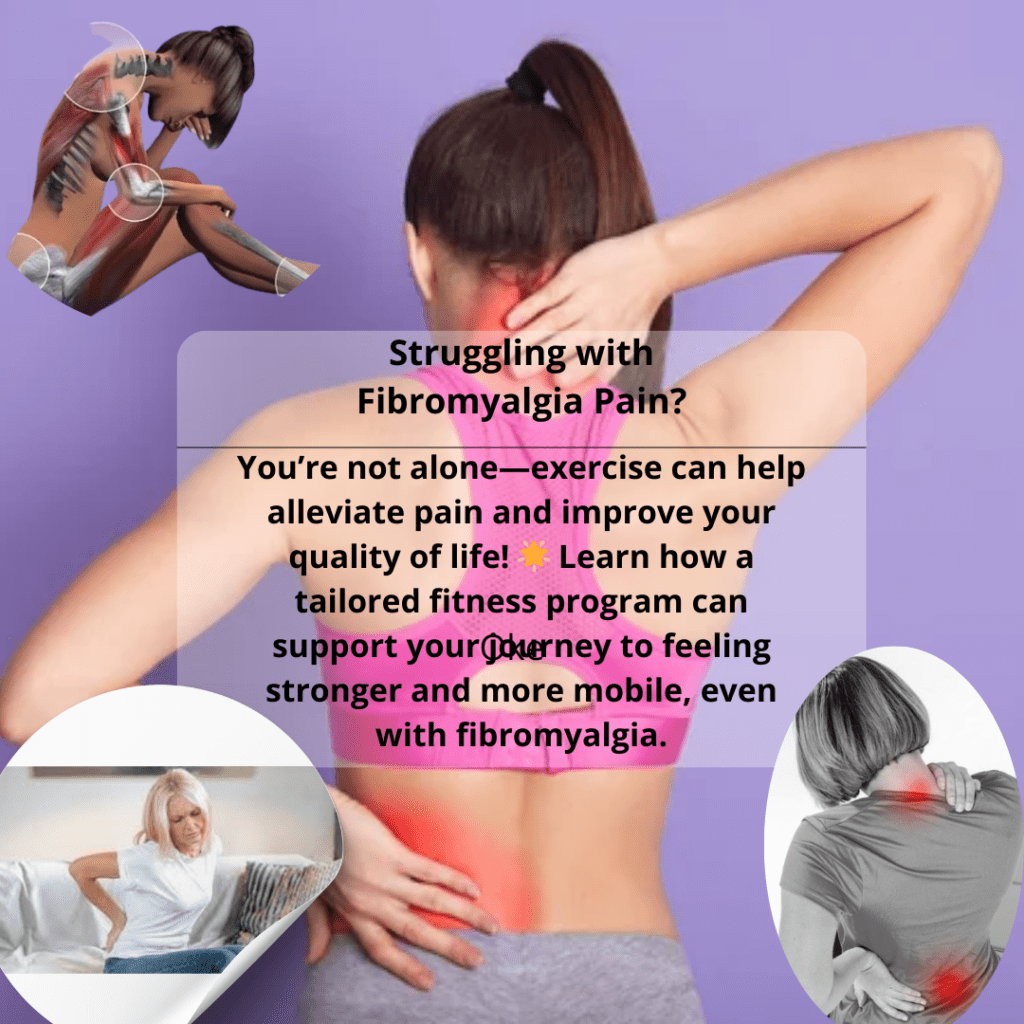Fibromyalgia is a chronic condition that affects millions of people worldwide, with a significant portion of those affected being women. Characterized by widespread musculoskeletal pain, fatigue, and tenderness in localized areas, fibromyalgia can be debilitating and interfere with daily life. While there is no cure, various treatments—including exercise—have proven to be effective in alleviating symptoms, improving mobility, and enhancing the overall quality of life for those suffering from the condition.

At 50PlusTraining, we understand how fibromyalgia can impact your day-to-day routine, but we also know that the right approach to exercise can make a significant difference in how you manage your pain and function. In this blog, we’ll explore what fibromyalgia is, how exercise can help, and what specific strategies we use to tailor fitness programs for individuals living with this condition.
What is Fibromyalgia?
Fibromyalgia is a long-term condition that causes widespread pain throughout the body, often accompanied by fatigue, sleep disturbances, and cognitive difficulties (sometimes referred to as “fibro fog”). Other symptoms include:
- Tender points around the body (especially in areas like the neck, back, hips, and shoulders)
- Stiffness, particularly in the morning
- Sensitivity to pain
- Headaches and migraines
- Depression and anxiety
- Irritable bowel syndrome (IBS)
The exact cause of fibromyalgia is unknown, but it is thought to be related to how the brain and spinal cord process pain signals. Women are more likely to be affected than men, and it often develops after a physical trauma, surgery, infection, or significant psychological stress. However, in some cases, symptoms gradually accumulate over time without a triggering event.
The Role of Exercise in Managing Fibromyalgia
While fibromyalgia may make physical activity seem daunting due to the pain, stiffness, and fatigue it causes, exercise is one of the most effective treatments for managing symptoms. It might seem counterintuitive to think that moving more can help reduce pain, but consistent, moderate exercise helps:
- Reduce pain levels over time
- Increase energy and reduce fatigue
- Improve sleep quality
- Enhance mood by releasing endorphins
- Increase flexibility and range of motion
- Strengthen muscles and joints, which can alleviate pressure on tender points
At 50PlusTraining, we work closely with clients who live with fibromyalgia, creating customized exercise programs that focus on improving physical function without triggering flare-ups.
How We Help
1. Low-Impact Aerobic Exercise
One of the most beneficial forms of exercise for individuals with fibromyalgia is low-impact aerobic activity. Activities such as walking, swimming, and cycling are gentle on the joints while promoting cardiovascular health and reducing overall pain sensitivity. We incorporate these activities into our fitness programs, carefully tailoring the intensity to each client’s ability to avoid overexertion, which could worsen symptoms.
2. Strength Training
Building muscle strength can alleviate pain by providing better support to the body and improving posture. However, strength training for fibromyalgia must be approached cautiously, as too much intensity or resistance can exacerbate symptoms. We focus on low-resistance strength training, using light weights or resistance bands to target specific muscle groups and improve functional strength without triggering pain.
3. Stretching and Flexibility
Flexibility exercises are crucial for relieving stiffness and improving mobility. Gentle stretching helps to ease muscle tightness and reduce the tension that often accompanies fibromyalgia pain. We include daily stretching routines in our programs that focus on improving the range of motion, particularly in areas prone to tenderness, like the hips, back, and shoulders.
4. Yoga and Pilates
Mind-body exercises like yoga and Pilates are highly beneficial for individuals with fibromyalgia. Not only do they promote flexibility and strength, but they also help manage stress and reduce pain sensitivity by focusing on controlled movements and deep breathing. These exercises are particularly effective at reducing the body’s stress response, which can trigger pain flare-ups.
5. Balance and Mobility Work
Because many individuals with fibromyalgia experience issues with balance and coordination, we incorporate exercises that focus on improving balance, stability, and mobility. These exercises are crucial for enhancing physical function, reducing the risk of falls, and allowing clients to move with greater ease throughout their daily activities.
6. Gradual Progression and Recovery
One of the challenges with fibromyalgia is that overexertion can lead to a worsening of symptoms. That’s why we emphasize gradual progression, ensuring that our clients start slowly and build up their exercise tolerance over time. Recovery is also an important part of the process, and we make sure that our clients understand the importance of rest and recovery days in managing their condition.
The Psychological Benefits of Exercise
Living with chronic pain can have a significant psychological impact, contributing to feelings of depression, anxiety, and isolation. Regular exercise releases endorphins, the body’s natural painkillers, which help to improve mood and mental well-being. Exercise also provides a sense of control and accomplishment, empowering individuals to take charge of their health and feel more confident in managing their symptoms.
Personalized Fibromyalgia Exercise Programs at 50PlusTraining
At 50PlusTraining, we’ve had the privilege of working with clients who live with fibromyalgia, helping them improve their quality of life through customized fitness programs. Our approach is always personalized, ensuring that we meet each client’s unique needs and limitations. We take into account factors such as pain levels, fatigue, and flexibility when designing a program, and we are committed to helping our clients feel stronger, more mobile, and more in control of their symptoms.
Ready to Take the First Step Toward Pain Relief?
If fibromyalgia pain is holding you back, it’s time to take action. Exercise may feel daunting, but with the right program and the right support, it can be a powerful tool in managing your symptoms and improving your quality of life.
Schedule your free 30-minute consultation today to learn how we can create a custom fitness program that works for you. We’re here to help you move more, hurt less, and live better.
Let’s talk! Click here to schedule your free 30-minute consultation call [https://calendly.com/50plus/30min ]
📞 Phone: 914-552-1179
📧 Email: luis@50plustraining.com
📍 Location: Yorktown, NY
Disclaimer:
I am not a medical professional, and the information provided here is based on personal experience and general knowledge in fitness training. If you have fibromyalgia or any other medical condition, please consult with a physician or healthcare provider before beginning any exercise program. It’s important to ensure that the exercises recommended are safe for your specific health needs.
